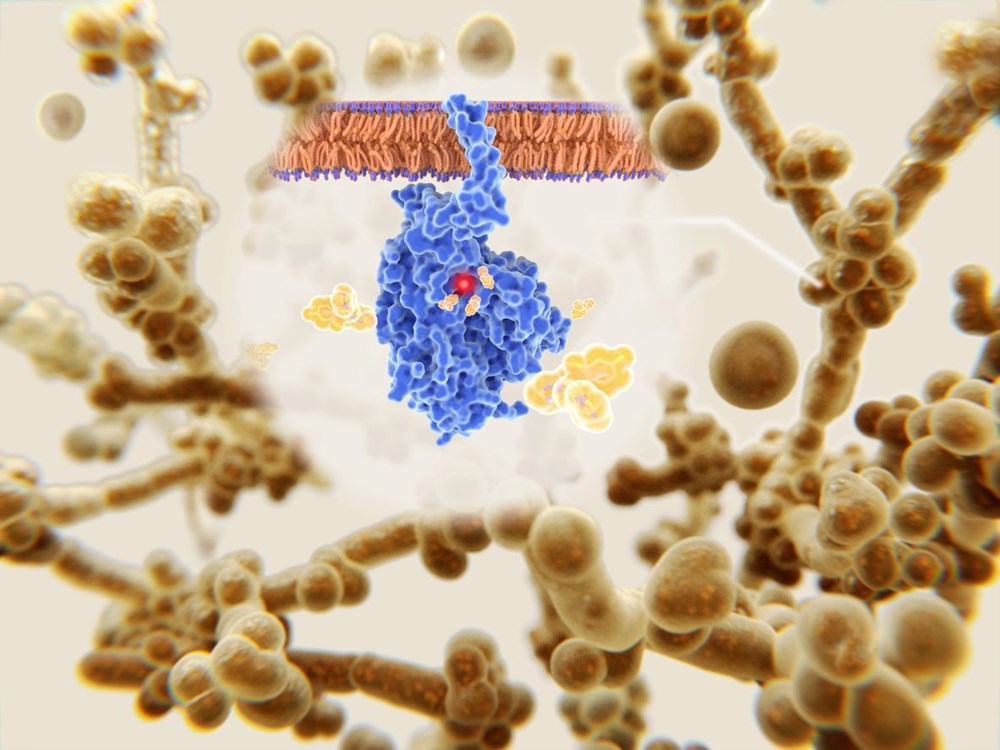I've never seen one with a flat hilt...
-
Happy Birthday ICMag! Been 20 years since Gypsy Nirvana created the forum! We are celebrating with a 4/20 Giveaway and by launching a new Patreon tier called "420club". You can read more here.
-
Important notice: ICMag's T.O.U. has been updated. Please review it here. For your convenience, it is also available in the main forum menu, under 'Quick Links"!
You are using an out of date browser. It may not display this or other websites correctly.
You should upgrade or use an alternative browser.
You should upgrade or use an alternative browser.
I find strange things and post them here - feel free to join in
- Thread starter acespicoli
- Start date
I know.some red flags.but they did make different versions like the mk2.i don't know and I really don't care.i was just curious.the handle is what's throwing me of.its old.its possible the parts have been replaced.the hilt and pommel are wobbly.
I was just wondering if anyone knew.not even mine.ill ask my uncle where he got it.something is off but that handle is real I think
I was just wondering if anyone knew.not even mine.ill ask my uncle where he got it.something is off but that handle is real I think
the sheath has MOST of the correct stamps, but the blade being a stainless makes me suspicious. most of the WW2 knives were made from 1095 carbon, with a % of them in a D2 tool steel variance. the sheath may be a re-make, it lacks the "Ka-Bar" imprint. not uncommon to need to replace a piece of leather before the steel it holds wears out though...
See if you can get the pommel off... then you'll be able to take the leather rings off and see if it's full tang at least.
It's wierd.the blade is off but the handle looks real.guess we will never know.theres no way that handle is not older than the blade.piece of junk either way.looks full tang though
Switcher56
Comfortably numb!
No! If I am not mistaken they "authentic K-Bars were made from High carbon Steel or subsequent ones. As an SS knife cannot start a fire when striking a "ferro rod".
That discoloration you see is cause buy striking a ferro rod, using the spine of the knife to start a fire.
This knife is a German Youth Knife a "Boy Scout" knife. made of Solligen steel. That knife is circa 1972. Purchased for $2.99 CAD. Besides staring fires, I have shaved with it in the past. Every now and again I used to "reblue" the blade. It has been a while. That knife has been to hell and back. The knife portrait is it original? IMHO No! for the aforementioned reasons. But hey, I've been wrong before. I would turn that knife down for my aforementioned reasons, however. I hope this helps

Switcher56
Comfortably numb!
Sorry I didn't see this (bold text) as I answered the 1st post. How the handle is made is from 8-9oz leather pieces, glued (epoxy) together along with the tang to prevent rotation of the handle on its tang over time, making the knife useless, and then sanded to shape. When removed from the tang, it usually comes off in one piece, in my experience with "good" quality leather handled knives I've owned in the past . We can clearly see that the handle was once removed from something and put back on something.I know.some red flags.but they did make different versions like the mk2.i don't know and I really don't care.i was just curious.the handle is what's throwing me of.its old.its possible the parts have been replaced.the hilt and pommel are wobbly.
I was just wondering if anyone knew.not even mine.ill ask my uncle where he got it.something is off but that handle is real I think
acespicoli
Well-known member
KA-BAR Knives - High Quality Razor Sharp Tactical Blades - BUDK.com
KA-BAR Knives - Lowest Prices, Best Selection. USA Made & ZK models!

Then there is the USGI style knife...
KA-BAR USMC Tactical Bowie Knife - Exact Replica - BUDK.com
6 7/8" Gun blue blade with deep blood groove
-
 dav2no1, 2 years ago
dav2no1, 2 years ago
Theres 3 main things to look at..
The Stamps(lettering), the tang and pommel.
Check both these links and compare your knife. You will have to read the 2nd link.
https://officialkabar.wordpress.com/historical-information/ka-bar-tang-stamps/
https://www.allaboutpocketknives.com/knife_forum/viewtopic.php?t=56061
Camillus makes some combat knives
One of my favorite knives was made in China....years ago I would have never owned one made anywhere but the usa. Infact the knife design is so nice I had asked a knife maker in the USA to make me a one off version
I will post it later when I have time to get it out
Last edited:
All I got is Buck lol

acespicoli
Well-known member
I had that exact same type of knife and lost it in a home burglary...40 years ago....my father had given it to meAll I got is Buck lol
View attachment 18823828
He was the one that first seen it had been stolen with some other things...Thats a solid piece pops was a avid outdoorsman, rip old man
I engraved the other side with my initials. My family used to be into hunting/fishing. We got old lol.
Switcher56
Comfortably numb!
it was said earlier carbon steel was a good thoughtKA-BAR Knives - High Quality Razor Sharp Tactical Blades - BUDK.com
KA-BAR Knives - Lowest Prices, Best Selection. USA Made & ZK models!www.budk.com
NSN markings is what I look for on official USGI issue and contract pieces
Then there is the USGI style knife...
View attachment 18823818KA-BAR USMC Tactical Bowie Knife - Exact Replica - BUDK.com
6 7/8" Gun blue blade with deep blood groovewww.budk.com
View attachment 18823819 View attachment 18823821
View attachment 18823820
View attachment 18823826
dav2no1, 2 years ago
Theres 3 main things to look at..
The Stamps(lettering), the tang and pommel.
Check both these links and compare your knife. You will have to read the 2nd link.
https://officialkabar.wordpress.com/historical-information/ka-bar-tang-stamps/
View attachment 18823825 https://www.allaboutpocketknives.com/knife_forum/viewtopic.php?t=56061
View attachment 18823827
Camillus makes some combat knives
One of my favorite knives was made in China....years ago I would have never owned one made anywhere but the usa. Infact the knife design is so nice I had asked a knife maker in the USA to make me a one off version
I will post it later when I have time to get it out
One thing I didn't pronounce myself on was the sheath. The sheath "Shithawk showed is machine stitched while the picture you posted is (or appears) hand stitched. The Q is to date I don't know of a machine that can hand stitch.
Considering the sheer number of sheath that require to be made, how are they stitched because they have the appearance of hand stitching (I'm a leather crafter amongst other things). The sheath on the left appears to be made from 2-3oz leather whilst the Kbar appears to be made from 6-8 oz leather.
It also has a bolster (not sure if that is the right word) (the piece of leather sandwiched between the front and back of the sheath, that extends the length of the blade)) prevents the knife of slicing the stitching. Found on "all" good quality sheaths. Although the rivets appear to be where the stiches are at, that bolster extends to both sides of the stitch. The blade will never come into contact with them. It's added protection to hold the sheath together, should the stitch fail for some reason or another. Then again, because the 3 layers of leather we see, "should" be bonded together with "leather weld" the rivets are only extra protection as they are not truly required. They are redundant.
In my learned opinion. It's a fake based on the discussion that has been brought forth on the subject. It was made to look old....
I know.some red flags.but they did make different versions like the mk2.i don't know and I really don't care.i was just curious.the handle is what's throwing me of.its old.its possible the parts have been replaced.the hilt and pommel are wobbly.
I was just wondering if anyone knew.not even mine.ill ask my uncle where he got it.something is off but that handle is real I think
I don't see the Olean NY stamp....
piper
Well-known member
Prominent KA-BAR Tang Stamps Since 1898
John Jay
KA-BAR
KA-BAR, Olean N.Y.
Ka-bar, Olean N.Y.
Kabar (Pattern Number Underneath), USA
Keenwell
Olcut
Union Cutlery Co., Tidioute, Pa
Union Cut.Co., Tidioute
Union Cut. Co., Olean N.Y. (First Use in 1909)
Union (letters inside North American Shield)
U-R Co., Tidioute PA
Union Razor Co., Tidioute, Pa
VikingU-C Co. Olean, N.Y. USA
John Jay
KA-BAR
KA-BAR, Olean N.Y.
Ka-bar, Olean N.Y.
Kabar (Pattern Number Underneath), USA
Keenwell
Olcut
Union Cutlery Co., Tidioute, Pa
Union Cut.Co., Tidioute
Union Cut. Co., Olean N.Y. (First Use in 1909)
Union (letters inside North American Shield)
U-R Co., Tidioute PA
Union Razor Co., Tidioute, Pa
VikingU-C Co. Olean, N.Y. USA
Are any of them printed with 3092UC Stainless Steel?

New Deadly Outbreak: What Is Candida Auris? Seen in Turkey?
Scientists have warned against the superfungal disease, which is resistant to drugs and can cause up to 78 percent death in people it infects. While the cases of the fungus called Candida auris are increasing in many countries, especially in the USA, experts are worried that the fungus, which is...expatguideturkey.com
Ece Nagihan 11 January 2023

Scientists have warned against the superfungal disease, which is resistant to drugs and can cause up to 78 percent death in people it infects. While the cases of the fungus called Candida auris are increasing in many countries, especially in the USA, experts are worried that the fungus, which is difficult to detect and treat, may cause a global epidemic. In this article, “What is Candida auris?” “Has Candida auris been seen in Turkey?”, “How deadly is Candida auris?” and “What are the symptoms of Candida auris?” Find answers to your questions and more.
US health officials announced that a drug-resistant “super” fungus was discovered for the first time in the state of Mississippi. As of Monday, seven patients began receiving treatment for the fungus Candida auris (C. auris), according to officials from the University of Mississippi Medical Center (UMMC).

The US Centers for Disease Control and Prevention (CDC) has warned that C. auris is an “emerging fungus that poses a serious global health threat.” The infection, which is highly contagious and resistant to many antifungal drugs, can cause serious illness in people who already have chronic health problems.
From the UMMC Division of Infectious Diseases, Dr. “This is the first time we have had a locally acquired case in Mississippi. The public needs to be aware that we have seen this fungus. Most cases of C. auris in the US are due to its spread within healthcare facilities in the same city or state,” said Bhagyashri Navalkele. It was stated that the fungus in Mississippi appeared at the care facility.

SILENT CARRIERS
Health officials stated that when classifying cases, they had to distinguish between infections and “colonization”, which refers to the presence of microorganisms that have not yet caused infection.
Dr. “Colonization means you can be a silent carrier of the fungus and then there can be an active infection. If you are identified as colonized, you should make sure your healthcare team knows this so they can begin isolation measures immediately and initiate appropriate treatment when infection is suspected,” Navalkele said.
On the other hand, Dr. Navalkele stated that C. auris is resistant to most drugs used against fungal infections.
Dr. Navalkele also pointed out that C. auris is difficult to identify with standard laboratory methods and can be misidentified in laboratories that do not have a specific technology.
On the other hand, C. auris cases seem to have increased in the last decade across the USA. Only 63 cases were reported in four states between 2013 and 2016, according to CDC data. According to the figures, 1,440 cases were detected until September 30 in 22 states in 2022.

WHAT IS CANDIDA AURIS?
Candida auris is a mysterious and dangerous fungal infection that is resistant to many known common antifungal drugs. Candida auris is a fungus that can cause life-threatening infections when it enters the bloodstream. It was first described in 2009 in a patient in Japan. In recent years, it has begun to appear largely in hospitals and nursing homes.
WHY IS CANDIDA AURIS DANGEROUS?
C. auris often shows resistance to certain antifungal drugs used to treat such infections. According to statements from the CDC, more than 90 percent of C. auris infections are resistant to an antifungal drug, while 30 percent are resistant to two or more drugs. Once the microbe settles in a place, it is very difficult to completely eradicate it from there. Some hospitals have to provide special cleaning equipment for this process and in some cases even have to remove floor and ceiling tiles.

WHAT ARE THE SYMPTOMS OF CANDIDA AURIS?
People with weakened immune systems, the elderly, the sick, and newborns are at increased risk for C. auris. Common symptoms of C. auris include fever, muscle pain, and malaise. However, because it can be confused with the symptoms of other diseases, it becomes very difficult to detect the presence of superfungus without testing it.

HOW FATAL IS CANDIDA AURIS?
According to the study published in the scientific journal BMC Infectious Diseases in 2019, the mortality rate in populations infected by C. auris ranges from 30 percent to 78 percent.

HAS CANDIDA AURIS BE SEEN IN TURKEY?
According to CSC’s map, the superfungus C. auris has been spotted in many countries, including the USA, Canada, Russia, Australia and Greece. However, the root of the disease has not yet been found in Turkey.


Fruiting bodies erupt from a dead moth killed by the cordyceps fungus. The genetically related ophiocordyceps fungus similarly kills insects, but first makes its host body do its bidding.
Photograph by Alex Hyde, Nature Picture Library
- Science
- Explainer
Could a parasitic fungus evolve to control humans?
The zombie-creating fungus in The Last of Us is real, but there are many other fungi to fear. Of the 5 million fungal species in the world, a few hundred are dangerous to people.
An ant, no longer in control of its body, crawls away from its colony, hangs perilously on a leaf, and waits to die as a fungus consumes its body, emerges from its head, and releases spores into the air.
“They’re like these grim little Christmas ornaments out in the forest,” says Ian Will, a fungal geneticist at the University of Central Florida, where these zombified ants can be found.
What if this parasitic fungus could do the same thing to us?
That’s the premise of the new television show based on the video game The Last of Us in which, as a result of warming temperatures caused by climate change, a fungus takes over the world and turns humans into parasite-controlled zombies.
“In a fantastical way, the logical links are there, but it’s not likely to happen in real life,” says Will. But while scientists aren’t worried about fungi evolving to turn people into zombies, rising temperatures do pose a real risk of making fungal infections worse.
How does the parasite infect ants?
Creator of The Last of Us Neil Druckmann was reportedly inspired by a nature video showing the fungus, Ophiocordyceps unilateralis, infecting a bullet ant. Cordyceps are a broad category of insect parasites, and a popular health supplement. But only ophiocordyceps control their host’s body.
About 35 of these ophiocordyceps fungi are known to turn insects into zombies, but as many as 600 may exist, says João Araújo, an expert on parasitic fungi at the New York Botanical Garden.
The first signs of infection are erratic and abnormal behavior. Scientists think the parasite takes physical control of its host by growing fungal cells around the brain that hijack an insect’s nervous system to control its muscles. It’s unclear exactly how it does this, whether by releasing a chemical or altering a bug’s DNA, says Will.
It’s a process the fungus has been refining within its specific host since before human history.
“Our hypothesis is that they have been coevolving for about 45 million years,” says Araújo.
Are we sure it can’t infect humans?
For the fungus to move to any warm-blooded animal would require some serious evolutionary work.
“If the fungus really wanted to infect mammals it would require millions of years of genetic changes,” Araújo.
Each zombie-creating fungus species evolved to match a specific insect, so unique strains have little effect on an organism except for the one they evolved to infect. For example, a cordyceps that evolved to infect an ant in Thailand can’t infect a different ant species in Florida.
“If a jump from an ant species is hard, to jump to humans—that’s definitely sci-fi,” says Will. “But this idea that temperature plays a role in fungal infections is certainly reasonable.”
A threat from rising temperatures?
Even without a looming threat from parasitic fungi, there are plenty of other fungi to fear.
There are millions of fungal species estimated to exist in the world, and a few hundred are known to be dangerous to humans. One thing that’s protected us from serious fungal infections are our own warm bodies. At around 98°F, human bodies are too hot for most fungal species to spread an infection—they prefer a range of 77°F to 86°F.
(Forget what you think you know about the average human body temperature.)
“One of the reasons why we have skin fungi is they can get between folds of skin. Those are sort of wet, dark places fungi can proliferate that are cooler than body temperature,” says Shmuel Shoham, an infectious diseases expert at Johns Hopkins University School of Medicine.
“As the Earth warms up, there is concern that the change between environment temperature and body temperature won't be as dramatic,” he says. Hypothetically, that would make it easier for fungi that have evolved to withstand hotter outdoor temperatures to also be able to survive inside the human body.
There is one fungal species capable of infecting people that scientists think may have resulted from warming temperatures, called Candida auris.
It wasn’t even known to science until 2007, but in 2011 and 2012, it was suddenly found on three different continents.
“It came out of nowhere,” says Arturo Casadevall, an infectious disease expert at Johns Hopkins Bloomberg School of Public Health. “The idea is that this fungus was out there, and over the years it adapted to higher temperatures until it could break through.”
When they enter the bloodstream, fungi present symptoms similar to a bacterial infection, Shoham notes. For people with healthy immune systems, fighting them off is typically not an issue. But many are not so lucky: The Centers for Disease Control estimates that 30 to 60 percent of patients infected with the fungus have died, although the possibility they had underlying health conditions makes it difficult to determine how pivotal a role Candida auris played.
But when asked if a fungal outbreak akin to COVID-19 was possible, Casadevall says it’s not out of the question.
Considering that possibility, he posits, “Am I worried about an unknown disease emerging and infecting the immunocompetent? Sure.”
View attachment 18822652
View attachment 18822655 View attachment 18822656
View attachment 18822651
Candida auris - Wikipedia
en.wikipedia.org
Last edited:
Absolutely not which is the second giveaway after the fake 'sheath' pictured. You do not have a USMC Ka-Bar, @shithawk420 . Ka-Bars are made from 1095 high carbon steel. There is a D2 steel version which is harder steel than 1095 but it is also high carbon.Are any of them printed with 3092UC Stainless Steel?
The embossing on the sheath made me laugh.


